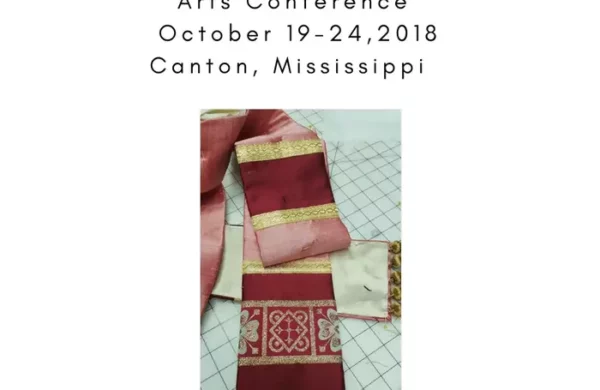
Here is the perfect chance to learn the skills and techniques to make stoles, pulpit falls, and chasubles. You will learn to make vestments using the same techniques we use in our Ecclesiastical Sewing Studios. Join us for a weekend of fun, fellowship, and relaxation as we learn to create beautiful church vestments. We look forward to seeing everyone in the fall!
Like this:
Like Loading...
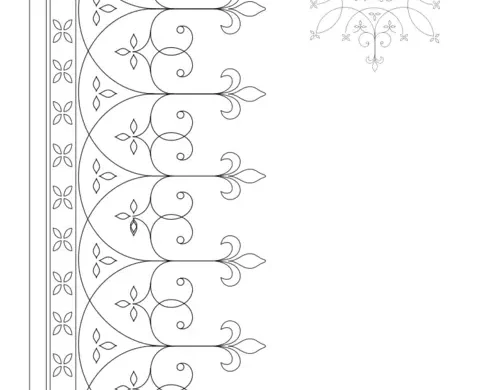
The design consists of a border pattern and a scrollwork cross embroidery pattern. The border pattern comes from my collection of vintage embroidery designs. These vintage designs come in all kinds of shapes, sizes, and conditions. They must be cleaned up and turned into a line drawing to be used as an embroidery pattern. The cross pattern is a new design created from components of the border pattern.
Like this:
Like Loading...
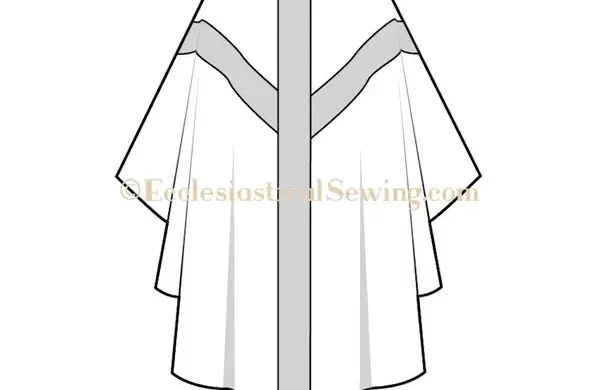
The Gothic Chasuble with the column orphrey band has shoulder seams that are different from the Y orphrey chasuble. They are considered “uneven” shoulder seams with the back seam being at a slightly different angle than the front. This allows for additional drape in the chasuble back and as the sleeves and hems hang, there is more fullness along the sides. The Gothic Chasuble with the Column Orphrey is also a longer chasuble with a 52 to 54-inch finished length. The width of this chasuble is around 54 to 56 inches, so it easily cuts on the fold of a 56 to 60-inch wide fabric.
Like this:
Like Loading...
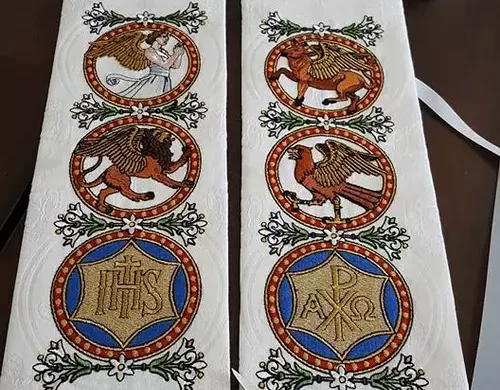
Ecclesiastical Sewing presents “The Evangelist Collection,” a vintage church embroidery designs recreated for a new era. The project, undertaken with artist Edward Riojas, involved restoring missing pieces to complete the original set. The collaboration celebrates history, and devotion, bringing these designs to a new generation for use in worship.
Like this:
Like Loading...

In Janet Mayo’s book, “A History of Ecclesiastical Dress,” she begins by exploring the Early Church’s post-Christ era, progressing chronologically. The narrative delves into various garments, contextualizing them within specific eras, locations, and decrees.
Like this:
Like Loading...
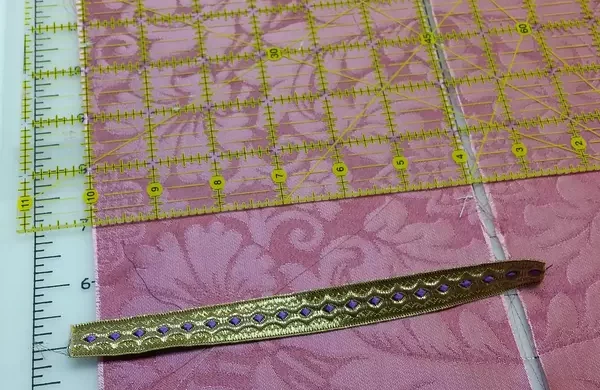
The Warm & Fuzzies We have had a weird February in Minnesota and now March is proving that weather is truly an unpredictable thing. Spring is fighting hard to… Read more The Warm & Fuzzies →
Like this:
Like Loading...
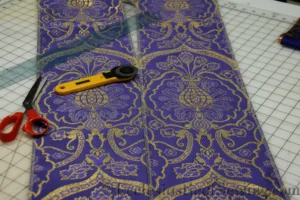
Our goal and mission at Ecclesiastical Sewing are to provide high-quality fabrics, trims, designs, and finished vestments suitable for use in the service of the church. To do a better job at that, Hoping that we might get some feedback and suggestions from you, our faithful readers, as well as from members of the clergy.
Like this:
Like Loading...
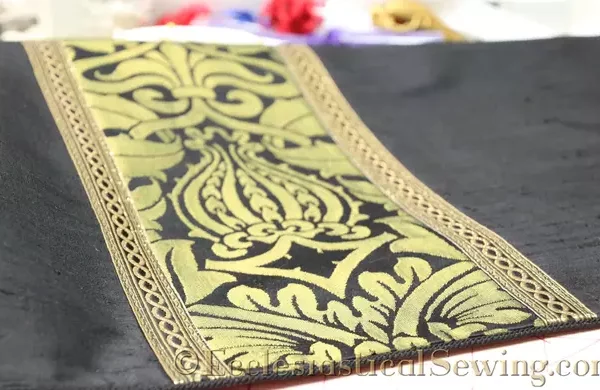
The Saint Augustine Chalice Veil is made from Silk Dupioni, which is a great option for black vestments used on Good Friday. Silk Dupioni is a good fabric choice for church vestment making because it looks rich, has a natural sheen, and a depth of color. Combining a solid fabric with a patterned orphrey allows the vestment to be visible from more than the first few rows of church pews.
Like this:
Like Loading...
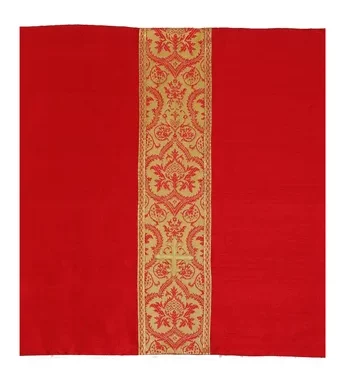
To test a pattern for a Chalice Veil at Ecclesiastical Sewing, red silk dupioni was used for the face fabric, satin for the lining, and Evesham brocade for the orphrey band, trimmed with Saint Benet trim. The process involved measuring, cutting, and adding the orphrey band and trim. Basting the trim before sewing helped ensure it stayed straight. After completing the orphrey band, it was stitched to the silk, a cross was applied with an iron, and the lining was hand-stitched. The final result is a beautiful Chalice Veil in the Saint Gregory Collection of Vestments.
Like this:
Like Loading...

The book is titled “English Medieval Embroidery Opus Anglicanum,” and has been published in association with the Victoria and Albert Museum. The book is the result of the research that was undertaken in preparation for the Opus Anglicanum Exhibit. The first major exhibit on the topic of Medieval Embroidery in almost fifty years. The book created for the exhibit expected to become the standard work of reference. It includes detailed illustrations of works in the exhibit as well as comparable pieces from other collections to aid discussions.
Like this:
Like Loading...
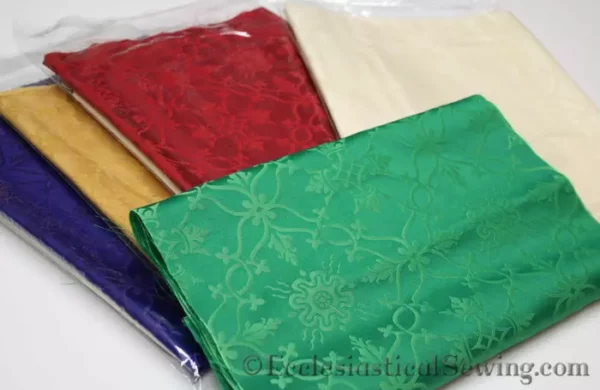
Ecclesiastical Sewing offers a variety of clergy stole patterns, including the 4 1/2″ wide pastoral or priest stole pattern. Refined over time and digitized by a professional pattern maker, it includes traditional markings, grain lines, and notches for easy assembly.
Like this:
Like Loading...
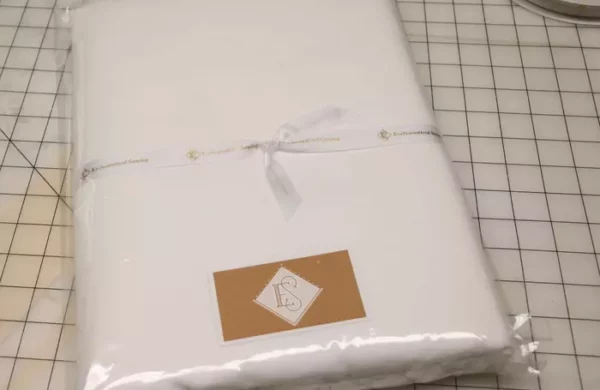
Renaissance Altar Linen – 100% Irish Linen fabric, which is 60″ wide. It feels like a vintage altar linens as it has similar weight and weave. This linen has a nice hand and body and presses well. Small altar linens and altar Fairlinens are made from this pristine white Irish Linen fabric.
Like this:
Like Loading...

Like the majority of modern ecclesiastical vestments, the cope has its origins in ancient garments. The Cope–Norris, unlike other vestments, is a bit of a mystery. With an unknown origin, its ancestor could be either the garment known as a paenula, the lacuna, or the buyers.
Like this:
Like Loading...

Before the Renaissance, the corporal was often as big as an altar cloth. Since then, it has had smaller dimensions, depending on the size of the altar. It remains essentially a corporal as long as it holds the chalice, the paten, the host, and the ciborium cover. As the corporal is a simple cloth that has the honor of holding the Eucharist, it needs little decoration to complete its job
Like this:
Like Loading...

In the thirteenth century, the papal tiara evolved with a cone shape, growing taller. The peak had an egg shape, and the bottom was adorned with a headband. Styles included vertical or crisscross bands of gold, while the cap remained white linen or cloth of gold. Gems and pearls adorned the tiara. St. Gregory is depicted wearing a thirteenth-century tiara with a vertical band, while Pope Clement IV’s tiara had crisscross bands. Clement, presenting the crown of the Two Sicilies, wore a gold tiara adorned with jewels and fleurons.
Like this:
Like Loading...
















You must be logged in to post a comment.